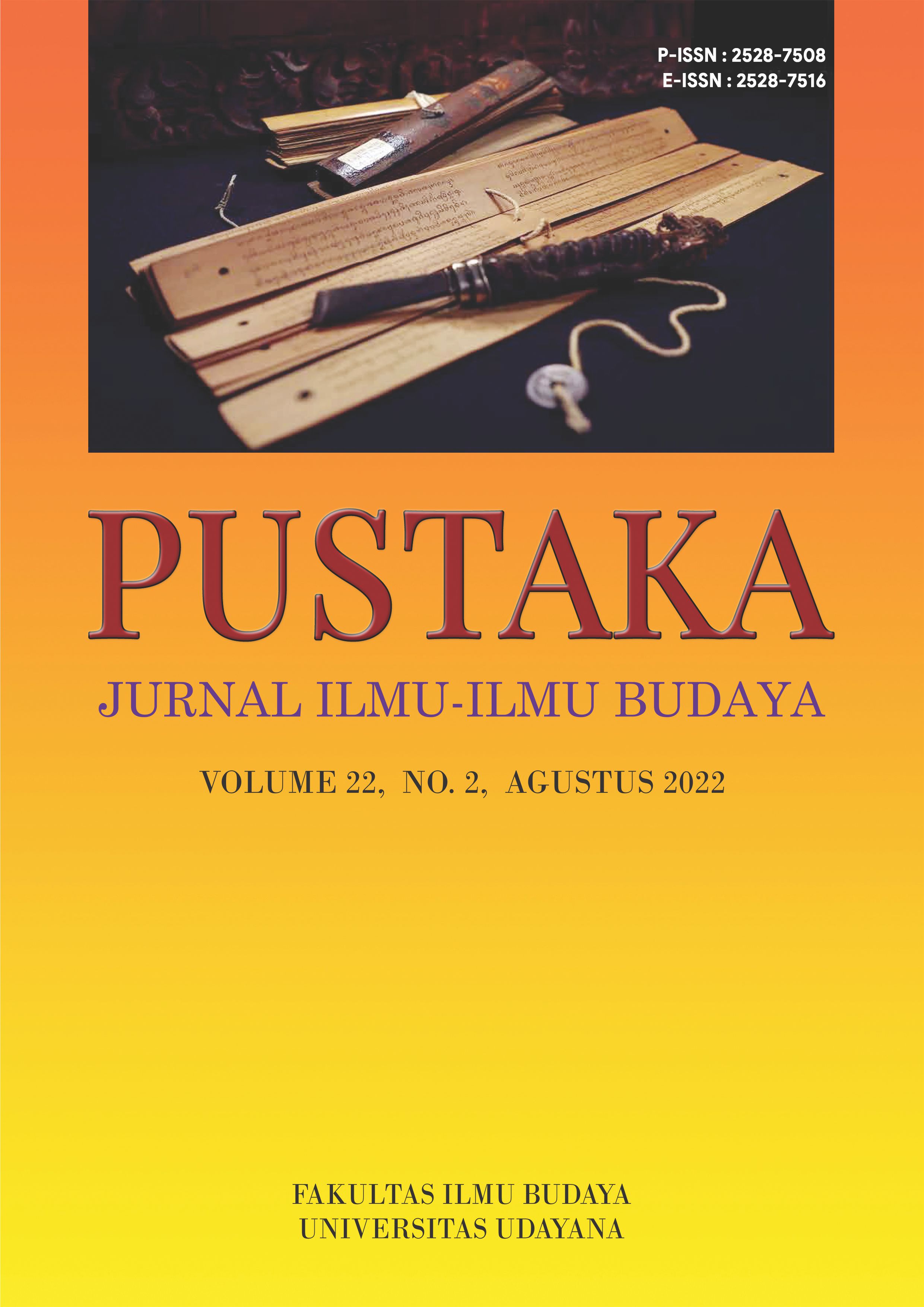The Effects of Cohesive Devices Used in the Background of the Study of English Department Students’ Undergraduate Theses
Abstract
This study entitled The Effects of Cohesive Devices Used in the Background of the Study of English Department Students' Undergraduate Theses aims to analyse the effects of the overuse, underuse, and misuse cohesive devices employed by the English Department students in the background of the study in their undergraduate theses. The data of this study is taken from ten backgrounds of the studies written by the English Department students, Faculty of Humanities, Udayana University submitted in 2021 in various topic. This study is conducted using descriptive qualitative method. In collecting the data, documentation method utilized by a checklist instrument and note-taking technique are used to collect the data. The method for presenting the data analysis in this study could be formal and informal. In analysing the data, this study employs the theory from Halliday and Hassan (1976) about the cohesive devices and supporting theory by Ong (2011). The results of this study show that there are several types of cohesive devices are overused, underused, and misused. The overuse of cohesive devices is dominated by the overuse of repetition, conjunction, reference, and synonym. Then, the underuse of cohesive devices found in conjunction and reference. Lastly, the misuse of cohesive devices is found in reference and conjunction. The effects from these overuse, underuse, and misuse of cohesive devices affect the text, especially the connections of the ideas become not in cohesion. Those cases also affect the effectiveness, clarity, and the way the reader comprehend the meaning of the text.
Downloads
References
Fox, C., Manning, E., Murphy, M., Urbom, R., Marwick, K. C. (2003). Practice In Longman dictionary of contemporary English. London, England: Harlow Longman.
Guna, S., & Ngadiman, A. (2015). The Cohesive Devices Used in the Cause Effect Essay Written by the English Department Students of STKIP St. Paulus Ruteng. Magister Scientiae, (38), 93-107.
Halliday, M. A. K. and Ruqaiya Hasan. (1976). Cohesion in English. London: Longman Group Ltd.
Malki, F.Z. and Labed, N. (2018). The Effect of the Use of Cohesive Devices on Students’ Writing Quality (Doctoral dissertation). Constantine: University of Mentouri Brothers - Constantine 01.
Meisuo, Z. (2000). Cohesive features in the expository writing of undergraduates in two Chinese universities. RELC journal, 31(1), 61-95.
Othman, A. K. (2019). Investigation of grammatical cohesive devices errors made by Saudi EFL students in written paragraphs: A case study of the University of Tabuk, Saudi Arabia. European Scientific Journal ESJ, 15(2), 1-10.
Ong, J. (2011). Investigating the use of cohesive devices by Chinese EFL learners. The Asian EFL Journal Quarterly, 11(3), 42-65.
White, F. D. 1986. The Writer’s Art: A Practical Rhetoric and Handbook. New York: Wadsworth Publishing Company.
Yin, Z. (2015). The use of cohesive devices in news language: overuse, underuse or misuse?. RELC Journal, 46(3), 309-326.










